 Ryan Sinclair is nonplussed by the bicycle his grandmother, Grace, and her husband, Graham, have gotten for him; he suffers from a coordination disorder that makes riding it difficult, though he finds it easy – in a fit of anger – to throw it off a hill. As he’s retrieving it, Ryan sees a three-dimensional geometric shape form in the air; when he touches it, it disappears, replaced by a large blue pod. He calls the police, and is reunited with childhood friend Yasmin Khan, now a police officer in training, when she responds to his call.
Ryan Sinclair is nonplussed by the bicycle his grandmother, Grace, and her husband, Graham, have gotten for him; he suffers from a coordination disorder that makes riding it difficult, though he finds it easy – in a fit of anger – to throw it off a hill. As he’s retrieving it, Ryan sees a three-dimensional geometric shape form in the air; when he touches it, it disappears, replaced by a large blue pod. He calls the police, and is reunited with childhood friend Yasmin Khan, now a police officer in training, when she responds to his call.
Ryan, Grace and Graham are riding the train back into town when the train crashes into something, killing the driver. An undulating mass of electrical wires corners the passengers when a woman crashes through the ceiling of the train and immediately wards off the wires, as if that’s her first instinct. Unfortunately, while she immediately takes charge of the situation, she has no idea who she is, though she claims that she was a Scotsman mere minutes ago, confusing the already-terrified people in her vicinity. After this initial burst of activity, she collapses in Grace and Graham’s home, awakening to find that something has emerged from the pod seen by Ryan. A being called Tzim-Sha is hunting for a designated target on Earth, as part of a ritualistic hunt that determines the status of his race, the Stenza. What he doesn’t know is that he is now up against the Doctor – even if she’s not sure of who she is yet – who is pledged to protect Earth and its people.
 written by Chris Chibnall
written by Chris Chibnall
directed by Jamie Childs
music by Segun Akinola
Cast: Jodie Whittaker (The Doctor), Bradley Walsh (Graham O’Brien), Tosin Cole (Ryan Sinclair), Mandip Gill (Yasmin Khan), Sharon D. Clarke (Grace O’Brien), Samuel Oatley (Tim Shaw), Jonny Dixon (Karl), Amit Shah (Rahul), Asha Kingsley (Sonia), Janine Mellor (Janey), Asif Khan (Ramesh Sunder), James Thackeray (Andy), Philip Abiodun (Dean), Stephen MacKenna (Dennis), Everal A. Walsh (Gabriel)
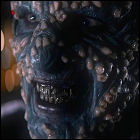 Notes: After 12 years of the Doctor’s adventures being scored by Murray Gold, this is the first change of music composer in the revived Doctor Who series; ironically, it’s also the first episode in Doctor Who’s 55-year history to completely omit an opening title sequence, so Segun Akinola’s new arrangement of the Doctor Who theme music wouldn’t debut until the following episode, The Ghost Monument. Bradley Walsh had previously appeared as Odd Bob in the Russell T. Davies-era Doctor Who spinoff The Sarah Jane Adventures (Day Of The Clown parts 1 and 2), as well as the 2001 comedy Hotel!, where he shared screen time with once and future Doctors Paul McGann and Peter Capaldi. The episode’s title is a reference to the 1976 movie The Man Who Fell To Earth, starring David Bowie. The teeth are a dead giveaway that Tim Shaw is no relation to Liz Shaw.
Notes: After 12 years of the Doctor’s adventures being scored by Murray Gold, this is the first change of music composer in the revived Doctor Who series; ironically, it’s also the first episode in Doctor Who’s 55-year history to completely omit an opening title sequence, so Segun Akinola’s new arrangement of the Doctor Who theme music wouldn’t debut until the following episode, The Ghost Monument. Bradley Walsh had previously appeared as Odd Bob in the Russell T. Davies-era Doctor Who spinoff The Sarah Jane Adventures (Day Of The Clown parts 1 and 2), as well as the 2001 comedy Hotel!, where he shared screen time with once and future Doctors Paul McGann and Peter Capaldi. The episode’s title is a reference to the 1976 movie The Man Who Fell To Earth, starring David Bowie. The teeth are a dead giveaway that Tim Shaw is no relation to Liz Shaw.
LogBook entry by Earl Green
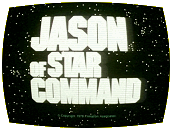 Launched by Jason from the surface of the unstable planet on which he’s tapped, the tiny Wiki robot homes in on Nicole’s Starfire and alerts her to Jason’s plight. Dragos delivers an ultimatum to Space Academy: surrender, or he will allow the Academy to fall into the sun. Professor Parsifoot, left in command in the absence of anyone higher-ranking, refuses to give in to Dragos’ demands. Nicole rescues Jason and Allegra from the planet moments before it explodes, but her Starfire is intercepted by the Dragonship. Jason hatches an audacious plan to abandon ship, leaving Dragos to pick up an empty Starfire which will self-destruct shortly afterward.
Launched by Jason from the surface of the unstable planet on which he’s tapped, the tiny Wiki robot homes in on Nicole’s Starfire and alerts her to Jason’s plight. Dragos delivers an ultimatum to Space Academy: surrender, or he will allow the Academy to fall into the sun. Professor Parsifoot, left in command in the absence of anyone higher-ranking, refuses to give in to Dragos’ demands. Nicole rescues Jason and Allegra from the planet moments before it explodes, but her Starfire is intercepted by the Dragonship. Jason hatches an audacious plan to abandon ship, leaving Dragos to pick up an empty Starfire which will self-destruct shortly afterward.written by Samuel A. Peeples
Cast: Craig Littler (Jason), Sid Haig (Dragos), Susan O’Hanlon (Capt. Nicole Davidoff), Charlie Dell (Prof. E.J. Parsafoot), James Doohan (Commander Canarvin), Roseanne Katon (Allegra)


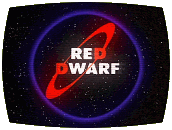

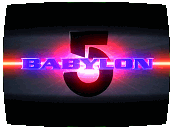

 written by J. Michael Straczynski
written by J. Michael Straczynski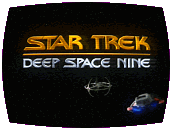



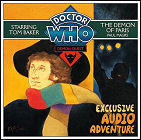

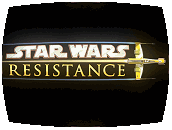
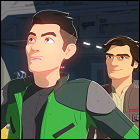 Cast: Christopher Sean (Kazuda Xiono), Josh Brener (Neeku Vozo), Scott Lawrence (Jarek Yeager), Suzie McGrath (Tam Ryvora), Anthony Daniels (C-3PO), Bobby Moynihan (Orka / Yani), Cherami Leigh (Mia Gabon), Dee Bradley Baker (First Order Comm Officer / Glem / Grevel), Fred Tatasciore (Bolza Grool / Hapless Pilot / Orthog), Greg Proops (Jak Sivrak), Jim Rash (Flix), Jonathan Lipow (Glitch), Lex Lang (Major Vonreg), Myrna Velasco (Torra Doza), Sam Witwer (Hugh Sion), Tovah Dekshuh (Aunt Z / Random Human), Tzi Ma (Hamato Xiono), Oscar Isaac (Poe Dameron)
Cast: Christopher Sean (Kazuda Xiono), Josh Brener (Neeku Vozo), Scott Lawrence (Jarek Yeager), Suzie McGrath (Tam Ryvora), Anthony Daniels (C-3PO), Bobby Moynihan (Orka / Yani), Cherami Leigh (Mia Gabon), Dee Bradley Baker (First Order Comm Officer / Glem / Grevel), Fred Tatasciore (Bolza Grool / Hapless Pilot / Orthog), Greg Proops (Jak Sivrak), Jim Rash (Flix), Jonathan Lipow (Glitch), Lex Lang (Major Vonreg), Myrna Velasco (Torra Doza), Sam Witwer (Hugh Sion), Tovah Dekshuh (Aunt Z / Random Human), Tzi Ma (Hamato Xiono), Oscar Isaac (Poe Dameron)

 Notes: After 12 years of the Doctor’s adventures being scored by Murray Gold, this is the first change of music composer in the revived Doctor Who series; ironically, it’s also the first episode in Doctor Who’s 55-year history to completely omit an opening title sequence, so Segun Akinola’s new arrangement of the Doctor Who theme music wouldn’t debut until the following episode, The Ghost Monument. Bradley Walsh had previously appeared as Odd Bob in the Russell T. Davies-era Doctor Who spinoff
Notes: After 12 years of the Doctor’s adventures being scored by Murray Gold, this is the first change of music composer in the revived Doctor Who series; ironically, it’s also the first episode in Doctor Who’s 55-year history to completely omit an opening title sequence, so Segun Akinola’s new arrangement of the Doctor Who theme music wouldn’t debut until the following episode, The Ghost Monument. Bradley Walsh had previously appeared as Odd Bob in the Russell T. Davies-era Doctor Who spinoff